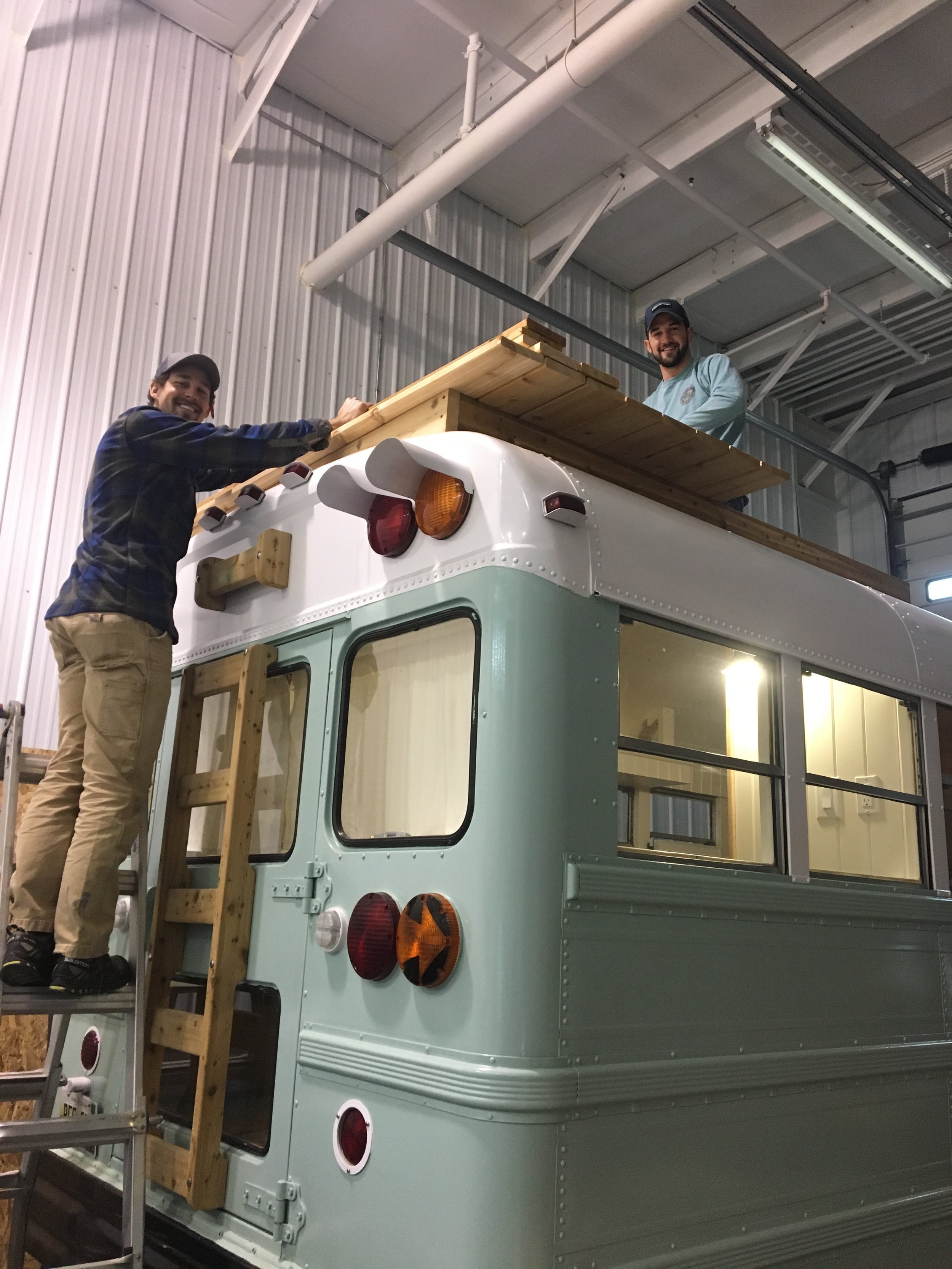"How'd you build that deck on top?"
This has been one of the most common questions regarding Fern's construction, so here's an explanation of the design and installation:
Our bus body, which I expect is similar to other models, has structural steel ribs beneath the sheet metal of the roof. These supports are made of 2" square tubing, and like the rafters in a house, they give the roof strength and rigidity. With 4"x4" posts, the deck is attached directly to these ribs so none of the weight rests on the flimsy sheet metal. I wanted the deck to "float" over the roof like this so water and debris could easily drain. Everything was constructed in cedar because the wood has some natural rot-resistance while being significantly lighter than treated lumber.
To begin, I cut a 2"x6" to the length of the deck and mounted it to the center of the roof. I attached it with self-tapping sheet metal screws to every structural rib. Using a forstner drill bit, I recessed the screw heads and made sure to seal everything with plenty of silicone.
Next, I cut 4"x4" posts on an angle to match the slope of the roof at the desired height. The galvanized angle brackets I used to attach the posts to the roof were designed to be used for mounting boat trailer bunks, but they happened to work great for this application too. I used a 3" lag screw and fender washer to attach to the lumber, and self-tapping sheet metal screws to attach to the roof. Again, I made sure to apply excessive amounts of silicone.
Once the series of 4"x4" posts were installed (seven on each side), I attached a 2"x4" to run the length of the deck (cut to the same length as the previously installed 2"x6"). I held it to match the height of the posts, and mounted it with 3" deck screws to each of the seven posts. These 2"x4"s, combined with the center-mounted 2"x6" will provide the support for our deck boards.
From here, it's just like any other deck—throwing down deck boards and screwing them in place!











